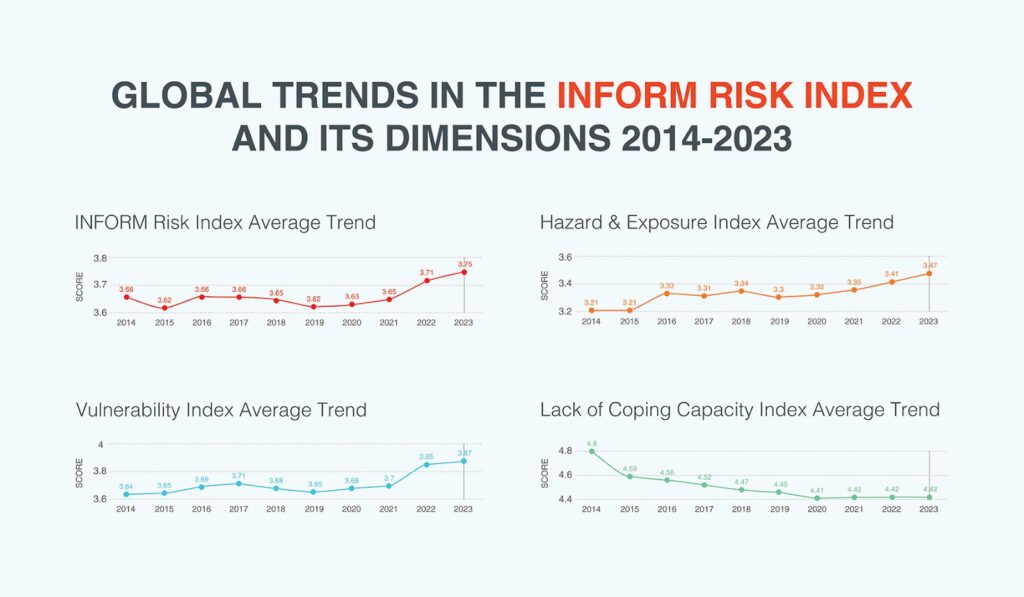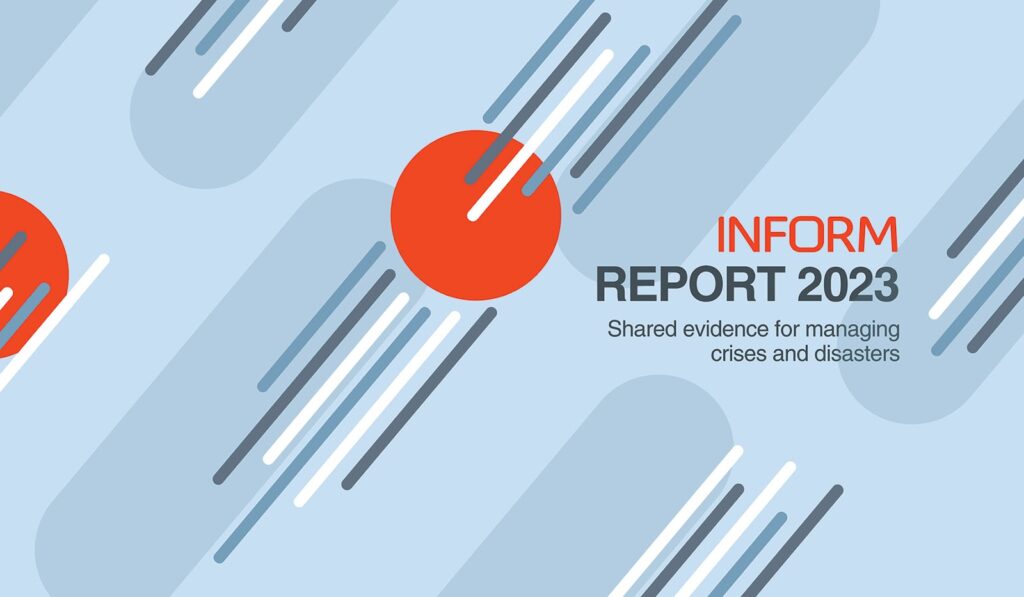Share
The INFORM Annual Report 2023 presents the latest results of INFORM Risk, INFORM Severity and INFORM Climate Change, as well analysis of historical trends and future projections. For almost a decade, INFORM partners have been developing shared, quantitative analysis relevant to humanitarian crises and disasters. These methodologies, tools and products support decision-making at different stages of the crisis management cycle, from crisis prevention to response, covering 191 countries.
Starting with the development of the INFORM Risk Index in 2014, INFORM has since broadened its portfolio of products to include INFORM Severity and INFORM Climate Change, launched in 2020 and 2022, respectively. Over the next two years, INFORM partners will develop INFORM Warning, which will help support decisions on anticipatory action.
The availability of analysis that is open and developed jointly across different operational and technical partners can lead to better coordination and, ultimately, better outcomes for at-risk and affected people. The Centre now oversees OCHA’s contribution to INFORM, which is aligned with its work to use data science and risk analysis for preemptive decision making.
Here are a few takeaways from this year’s report:
- There was an increase in the number of crises during 2022, from 115 to 136. Crises with significant increases in severity included: drought in Kenya; violence in the Darfur and Kordofan regions of Sudan and associated refugee flows into Chad; and the conflict in Ukraine. Several migration and displacement situations also deteriorated markedly, including in Costa Rica, Ecuador, Libya and Malaysia.
- Over the last ten years, there has been a general increase in the risk of humanitarian crises at the global level. While there has been an improvement in coping capacity, this has been negated by large increases in the number of people exposed to hazards, and to their vulnerability (see charts below). Conflict, displacement and shocks like the Covid-19 crisis were important drivers of increasing crisis risks in the last decade.
- Climate change will increase the risk of humanitarian crises. Under more pessimistic climate and socio-economic scenarios, by 2050, the number of countries classified as having ‘high’ or ‘very high’ crisis risk will increase from 36 today to 52. More than 5.5 billion people – almost double the number today – will be living in these countries, where almost all current humanitarian crises are located.
- Crisis risks will increase in all regions. However, certain regions – especially Africa – and low and lower-middle income countries will be worst affected. Drought is likely to be the most important driver of increasing crisis risk as a result of climate change.
 In addition to these global insights, the true value of INFORM products is in their use by organizations to support risk-based decision making, prioritization and resource allocation. For example, WHO uses the INFORM Epidemic Risk Index in its Dynamic Preparedness Metric, which helps countries understand their preparedness status and support actions to manage health risks. The European Commission Directorate-General for European Civil Protection and Humanitarian Aid Operations (DG ECHO) uses INFORM’s products in its evidence-based funding allocation methodology.
In addition to these global insights, the true value of INFORM products is in their use by organizations to support risk-based decision making, prioritization and resource allocation. For example, WHO uses the INFORM Epidemic Risk Index in its Dynamic Preparedness Metric, which helps countries understand their preparedness status and support actions to manage health risks. The European Commission Directorate-General for European Civil Protection and Humanitarian Aid Operations (DG ECHO) uses INFORM’s products in its evidence-based funding allocation methodology.
INFORM is a collaboration of the Inter-Agency Standing Committee and the European Commission. The Joint Research Centre of the European Commission is the scientific and technical lead of INFORM. This report is based on the data available at inform-index.org, which can also be found on HDX. The INFORM 2023 report was produced by OCHA on behalf of all INFORM partners. For more information, visit inform-index.org or the Centre’s resource library link.
